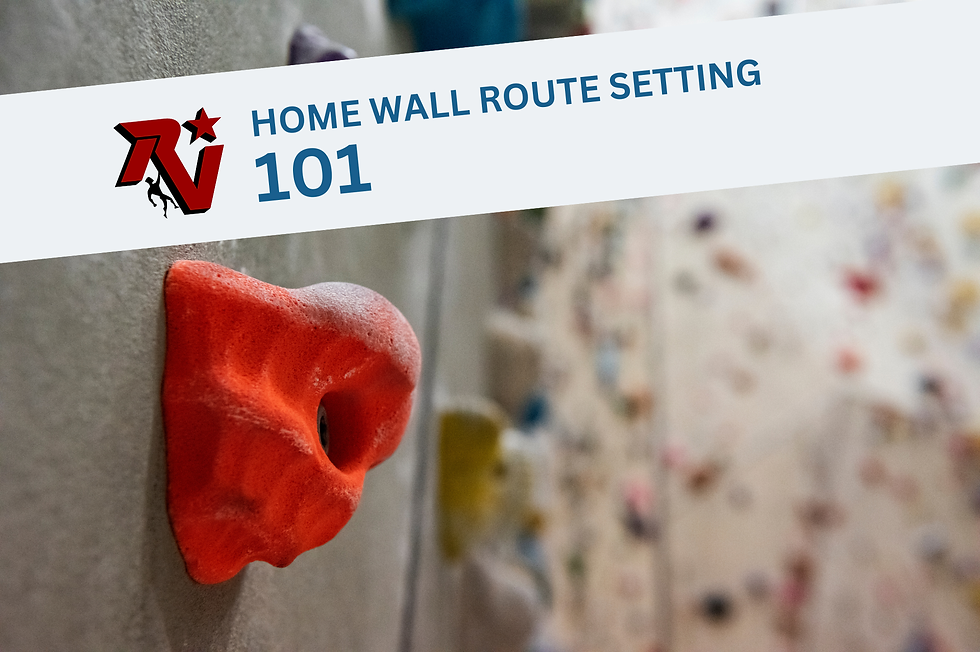Kilter Board Training vs. Tension Board Training
- Dovi Hirsch
- Dec 11, 2021
- 3 min read
by Christopher Schafenacker

Circularity explains the universe. We are all bodies in motion, on a body in motion, spinning through an ever-expanding space that is, in itself, a body in motion. Anything that spins draws a circle, and that describes all of us. It maybe shouldn’t come as a big surprise, then, that training for climbing has also come full circle.
Board training was a staple of climbing’s original visionaries. Their tool of choice was a home woody crammed with holds and tucked away in some cellar or abandoned school room. The advent of the climbing mega gyms forced a migration away from these pain caves, but, in recent years, we’ve seen a resurgence in board training. Today’s crushers continue to swear by the value of a good spray board (have you seen Ondra’s home wall?) but now augment this with more sophisticated rigs. The Tension Board and the Kilter Board are two of the most popular innovations, and while they have much in common, they serve fundamentally different purposes. This article attempts to explain how and why.
Tension Board Training
The Tension Board is an 8’ by 12’ symmetrically-set board with all wooden holds made by Tension Climbing. Unlike traditional symmetrically-set boards (called systems boards), Tension’s version does not just allow the execution of mirrored isolated movements but is designed to create entire mirrored boulder problems. The obvious advantage of this is the ability to train balanced movement patterns and target left- or right-side weakness.
The Tension Board’s meticulously crafted wooden holds also make this an ideal tool for training—yup, you guessed it—tension. The limited number of jugs notwithstanding, these are not easy holds to manage. They are not slippery, but nor are they rough. They are crafted with skin care in mind, and are designed for training…which means they make you work. Tension board training requires an immense amount of body tension and control, which is great because real rock demands these same attributes.
Where the Tension Board may be lacking is in its ability to train power. The very style of climbing that gives the board its name is antithetical to the sort of explosive, dynamic movement required of power training. This is not a defect so much as an orientation, however. The Tension Board was simply not designed for this purpose. The Kilter Board, on the other hand, was.
Kilter Board Training
The original Kilter Board has over 300 unique holds (compared to the Tension Board’s almost 200) and 15 angle pre-sets starting at 0° and progressing to 70° overhung at 5° intervals. This adjustable angle, paired with the positive nature of the Kilter Board’s predominantly three- or four-finger grips, makes it a tool useful to both beginner and advanced climbers alike. A newcomer to board climbing will appreciate the ability to repeat a familiar problem on progressively steeper terrain, while the seasoned crusher will salivate at the chance to throw big, hard moves on a near-horizontal roof without having to worry about wrecking their skin or rupturing a pulley. Not only does this feature lend itself to safe training, but it also allows power—not pain-tolerance—to be the limiting factor in your sessions.
The original Kilter Board measures an imposing 12’ by 12’ but for the space-impaired, a 7’ by 10’ Kilter Board home wall panel set is also available. Likewise, Rockstar Volumes offers a free-standing 45° Tension Board which make for easy at-home construction. Choosing between one or the other is like choosing between the Red River Gorge and Red Rocks—different but equally dreamy and, frankly, both are on most climbers wish lists.
Featured Climbing Training Gear
*NEW* The Rocketeer Wall: our free-standing adjustable solution for those who can’t mount a hangboard anywhere in their home or apartment—or who are limited on space. The Rocketeer gives climbers the additional option to set specific climbing holds. Recreate the crux holds of your proj and get ready to send, bruh.
The Rocket Wall: Available in 6’ and 8’ widths, it’s been tough for us to keep up with the demand for this innovative home climbing wall solution. Slightly overhanging, the Rocket Wall is big enough to set routes on, or to build a systems board.
The Rock-Stah: Our handcrafted version of a traditional hangboard, with curving crimp rails to help alleviate unnecessary strain on your pulleys. Because ain’t no one got time for a finger injury…










Comments